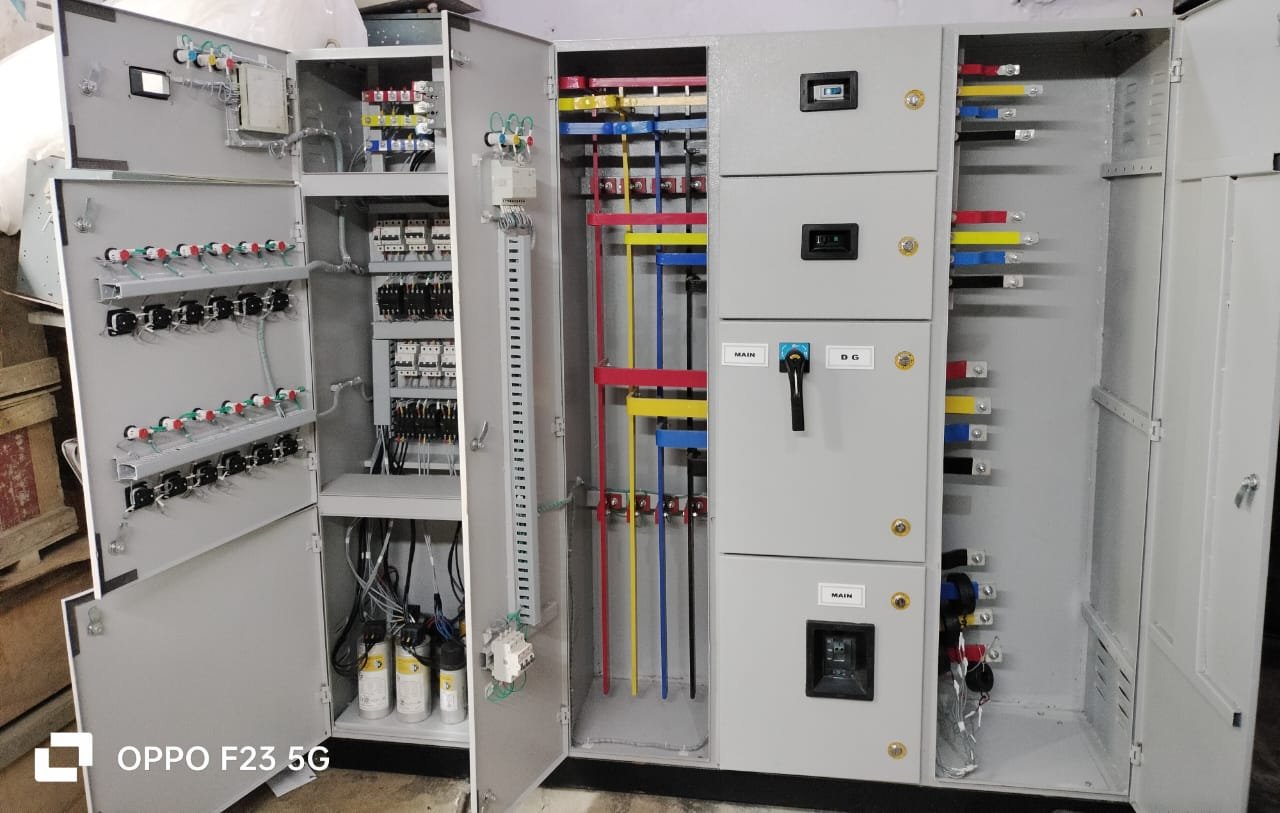

DISTRIBUTION PANEL
A distribution panel, also known as a distribution board or breaker panel, serves as the central hub for electrical distribution within a building & industry . Its primary functions include: Receives power from the main electrical supply. Distributes electricity to various circuits throughout the building.
What is work of distribution panel
Distribution of Electrical Power: The primary role of a distribution panel is to receive electrical power from the main power supply and distribute it to various circuits throughout a building & industry. These circuits can supply electricity to outlets, lighting fixtures, appliances, and other electrical devices.
Circuit Protection: Distribution panels contain circuit breakers or fuses that protect each circuit from overloads or faults. If an overload occurs on a particular circuit (e.g., too many devices drawing power simultaneously), the breaker trips or the fuse blows, cutting off power to that circuit to prevent overheating and potential fire hazards.
Organization and Control: The panel provides a centralized location where all electrical circuits are organized and controlled. Electricians can easily identify and manage different circuits, making maintenance and troubleshooting more efficient.
Safety: Properly installed and maintained distribution panels enhance electrical safety by ensuring circuits are properly grounded, connections are secure, and circuit breakers/fuses are functioning correctly. This helps reduce the risk of electrical shocks, fires, and equipment damage.
Expansion and Flexibility: Distribution panels are designed to accommodate future expansions or modifications to the electrical system. Additional circuits can be added as needed, provided the panel’s capacity and electrical load calculations are considered.
How distribution panel help to company to industry
Organized Power Distribution: In large industrial facilities or commercial buildings, there are typically numerous electrical circuits serving different areas and equipment. Distribution panels organize these circuits into manageable groups, making it easier to control and monitor the distribution of power throughout the facility.
Circuit Protection: Industrial machinery and equipment often require substantial electrical power. Distribution panels incorporate circuit breakers or fuses that protect each circuit from overloads and faults. This helps prevent damage to equipment, reduces downtime due to electrical failures, and enhances overall safety within the workplace.
Scalability and Flexibility: Industries are dynamic environments where equipment and operational needs can change over time. Distribution panels are designed with scalability in mind, allowing for the addition of new circuits or the modification of existing ones as the company expands or reconfigures its operations.
Maintenance and Troubleshooting: Centralizing electrical circuits in a distribution panel simplifies maintenance tasks and troubleshooting efforts. Electricians can quickly identify and isolate issues within specific circuits, minimizing downtime and optimizing operational efficiency.
Compliance and Safety: Industries are subject to rigorous electrical safety standards and regulations. Distribution panels that are properly installed and maintained ensure compliance with these standards, reducing the risk of electrical hazards, fires, and regulatory penalties
